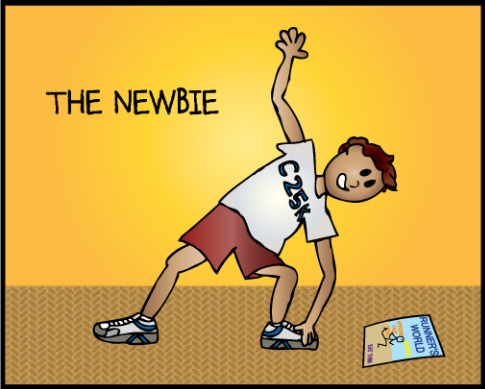I started running in 1998 as a freshman on my high school’s cross country team. I didn’t know anything about running – I was a total n00b.

But as I fell in love with running, I got interested in the science of training.
I bought all the running books. I studied the training of elite runners. I stayed on the cross country and track teams for eight years through college, learning from 10+ coaches and hundreds of teammates.
And as I gradually absorbed lessons, principles, and ideas from immersing myself in the sport, I gradually saw the big picture of training.
Not the nitty gritty things that many of us tend to focus on, like “What exercise is best for a sore toe?” or “Should I start my half marathon with a 9:00 or 9:10 mile?”
Being specific is important. But the fundamentals and learning to think about high-level ideas are much more critical.
When you can take a step back and view a training cycle (or even 1-2 years of training) from a birds-eye view, you’ll be able to make better long-term decisions.
And as Steve Magness, author of The Science of Running, recently said:
The best coaches design for steady incremental growth. Aim for lots of good ‘average’ training days.
Instead of chasing a few high mileage weeks or one soul-crushing workout, I’d rather you have more frequent “good” days. There’s less risk of injury, better for consistency, and won’t lead to burning out.
We can’t talk about long-term training without discussing context – and why it’s often the difference between a personal best and an injury.
The Training Context Principle
Too many runners focus on individual metrics like one workout, weekly mileage, or a single race performance.
But how does that tie into the context of your entire training cycle, background, or history of running injuries?
It’s this context that reveals a lot about the ability, performances, and future injury potential of a runner.
For example, if a runner tells me she did a 3-mile tempo run at 8:00/mile pace then that’s good. But there’s a lot more to consider:
- Did she run 5 miles before the tempo? Then that’s better.
- Did she also run this tempo in the middle of a 60-mile week? Then that’s a lot better.
- Did she also run this tempo at altitude? Then that’s exellent!
You see, there’s a lot more to consider than one metric.
Here’s another example for the marathoners out there: A classic workout is running several miles at goal marathon pace. So if you warm-up for two miles and then run 5mi at goal MP, nice work!
But what if those 5 miles at goal MP were at the end of a 20-mile long run?
What if that fast-finish long run was within a 70-mile week?
What if that long run was done two days after a hard workout?
Now we’re getting a clearer picture of the effort of this workout. The context surrounding those 5 miles at goal marathon pace is critical.
I see this at work all the time when it comes to pacing. One of my runners might be disappointed with a 3-mile tempo run where the pace should have been between 8:00 – 8:15, but he averaged 8:20.
First, it’s close enough!
Second, what is the context around this workout? As soon as I ask deeper questions, it comes out:
- The runner only got 6 hours of sleep the night before
- It was 80 degrees and humid
- The loop was on hilly terrain
In this situation, being slower than goal pace is just fine. The context surrounding the workout was unfavorable to running a great workout in the first place.
Context and Running Injuries
There’s no better way to see how context is so important than when looking at a runner’s injury history.
When I was researching Injury Prevention for Runners, I wanted to learn the top reasons why runners got hurt.
I pored over survey data. I took yoga classes that focused on injury prevention. I read countless studies, books, and articles.
I even went back and read hundreds of Runner Questionnaires (every runner fills one out before I build custom training plans).
During that research, I found that many runners didn’t take context into consideration when they made decisions. They did things like:
- Increase mileage every week, often by 15% or more
- Schedule two marathons in a single week
- Attend fitness classes at the gym that predispose them to injuries
- Plan races week after week, with no break for consistent training
- Rush into training for a marathon, cramming an aggressive long run schedule into 10-12 weeks
Just by avoiding these silly mistakes, you’ll cut your injury risk significantly. Knowing what not to do is just as powerful as knowing what to do.
You also need to be extra careful during particular times in your training. Check out this slide show for more:
- You’ll never increase mileage too drastically
- Race scheduling is appropriate – and doesn’t require rushed training
- Injury prevention is baked into the training plan. Just by following it, you’ll prioritize prevention!
If you’d like to learn more about how context matters when it comes to injuries, get our free course:
Injury Prevention Email Course
I’ll share inspiring case studies of how runners beat their own chronic injury cycle, more examples of what not to do, runner-specific strength workouts, and a lot more.